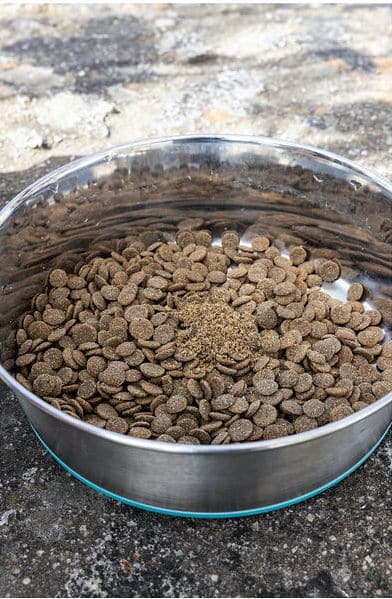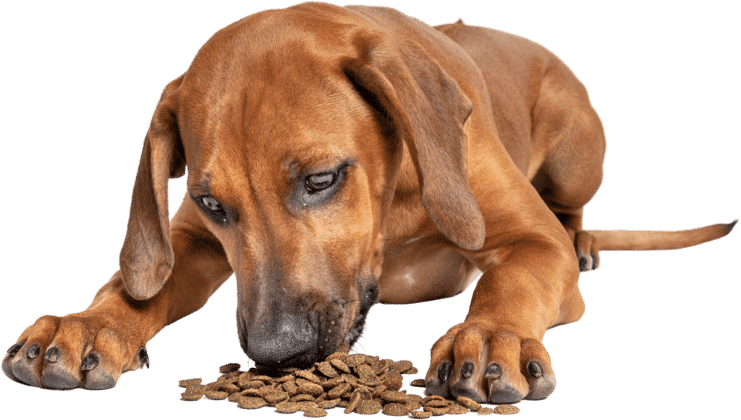If you’ve stood in the pet food aisle recently, you’ve probably noticed how widely dog food prices can vary. From supermarket brands as low as $4 per kilo to premium diets costing several times more, it’s natural to wonder: why is dog food so expensive? And is the higher price always worth it?
The truth is more nuanced than just “expensive equals better.” Let’s break down what drives dog food prices, what that means for your dog’s health, and how to make the best choice for your budget and your pet.
Not All Dog Food Costs the Same
At the most affordable end of the spectrum, supermarket dry foods can be priced as low as $4 per kilo. These products often rely on cheaper ingredients, less animal protein, and more fillers. They meet basic nutritional guidelines, but the quality of the ingredients can impact digestion, nutrient absorption, and long-term health.
On the other end, premium foods can cost significantly more. The higher price usually reflects:
- Protein quality and source: animal proteins that are novel, hypoallergenic, or more digestible cost more to produce.
- Functional ingredients: added prebiotics, omega-3s, or joint support nutrients all add value.
- Manufacturing standards: smaller batches, local facilities, and rigorous testing increase costs.
- Sourcing transparency: foods that name their farmers and suppliers are investing in traceable, high-integrity supply chains.
The Value of Quality Ingredients
What you feed your dog has a direct effect on their digestion, skin, coat, energy, and long-term wellbeing. High-quality foods typically contain:
- Clearly named protein sources (not just “meat meal”)
- Novel proteins that reduce allergy risk, like insect protein
- Digestible, sustainable grains such as sorghum or oats
- Functional ingredients like prebiotics for gut health
Cheaper foods, by contrast, often rely on bulk fillers, lower protein content, and vague labelling. These may keep costs down but can make life harder for dogs with sensitive stomachs or allergies.
What the Science Says About Fresh Food
Price debates often centre around fresh food diets versus dry kibble. Research from the Journal of Veterinary Internal Medicine has shown that feeding as little as 20% of a dog’s diet as fresh food is associated with measurable health benefits, including reduced risk of disease and improved longevity.
This doesn’t mean dogs can’t be healthy if they have kibble in their diet. It means that including fresh or less processed foods where possible can be beneficial, even if it’s just a small proportion of your dog’s diet.
Why Kibble Still Matters
Kibble remains the most widely fed form of dog food worldwide, here’s why:
- It’s convenient and shelf-stable
- It provides complete and balanced nutrition
- It’s affordable compared to full fresh or raw diets
At Feed For Thought, we don’t believe in shaming people for feeding kibble. We make kibble ourselves and it’s a great kibble. The difference lies in how it’s made and what goes into it.
Feed For Thought: Quality Kibble with a Difference
Our kibble is designed to be both digestible and functional. Here’s what sets it apart:
- Novel insect protein: Hypoallergenic, highly digestible, and naturally rich in chitin, which acts as a natural prebiotic, something not many proteins provide.
- Lauric acid for gut health: Found in insect protein, lauric acid supports a stable digestive environment and healthy microbiome.
- Australian sorghum: A gentle, gluten-free grain that’s drought resistant and grown without pesticides.
- Limited, functional ingredients: No fillers, no hidden extras. Every ingredient is chosen with a purpose.
- Vet formulated and Australian made: Produced in Sydney with transparency from farm to bowl.
Not everyone can afford a full fresh diet, and that’s okay. Feeding your dog the best quality you can within your budget matters more than chasing price tags.
Price Doesn’t Always Equal Quality
It’s easy to assume that more expensive dog food is always better, but that’s not always the case. Some brands spend heavily on marketing and packaging while offering little in terms of functional nutrition. On the other hand, some affordable mid-tier options can deliver excellent value.
When choosing food, don’t just look at price. Look at:
- Protein content — is the protein high enough to support your dog’s needs?
- Ingredient list — are the proteins clearly named? Are there functional ingredients?
- Transparency — do you know where the food is made and sourced?
A Balanced Perspective
Food is one of the biggest ongoing expenses of caring for a dog, and it’s normal for pet parents to weigh price against quality. But here’s the key: feeding your dog well doesn’t mean feeding the most expensive food you can find.
- If you can add fresh food to your dog’s diet, even 20%, there are measurable benefits.
- If you feed kibble, look for high-quality, digestible ingredients.
- If your budget is tight, do your best with what you can afford. Loving and caring for your dog is what matters most.
Final Thoughts
So, why is dog food expensive? Because quality ingredients, transparency, and functional nutrition cost more to produce. But expensive doesn’t always equal better. The best food for your dog is one that’s digestible, nutritious, and fits within your budget without guilt.
At Feed For Thought, we’re proud to make a high-quality kibble with novel insect protein, natural prebiotics, and functional ingredients. It’s sustainable, transparent, and Australian made. It’s a food that supports dogs with sensitive stomachs while caring for the planet.
👉 Feed the best you can, read labels carefully, and know that choosing thoughtfully matters more than simply chasing price.

